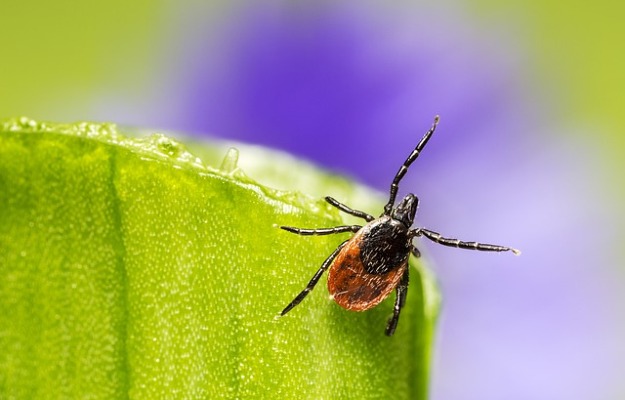For most people, having a dog in the house is an absolute pleasure. They make the ambience livelier and keep people happier - there are even some scientific claims of how pets improve health outcomes for owners, but more studies need to be done to corroborate this. However, there is an uncomfortable reality for some dog lovers to face. Roughly one in ten people are allergic to pets.
What causes a pet allergy? It is caused by certain types of proteins released in the dog’s urine, skin cells, or saliva. Dander (dry, flaky skin) is the most frequently implicated allergen: it is light and small enough to remain suspended in the air for a long period of time and get inhaled by a human. Similarly, saliva, urine and faeces can cling to any surface and the dust rising from them can also cause an allergic reaction. In canines, the Can f 1 protein is the most common cause of an allergic reaction.
If you notice that you sneeze, have a runny nose and/or congestion, have trouble sleeping or have intense pain in the face after being around or playing with a pet, you may be allergic to them. There may also be skin-related symptoms if you are allergic to pet dander, pet saliva or pet pee: hives, eczema, and itching are commonly reported in people who are allergic to dogs.
The symptoms of a dog allergy can be similar to the symptoms of a common cold in humans. However, if you have asthma or breathing-related issues, a dog-related allergy could land you in the emergency ward. Those with poor immunity and underlying conditions that suppress the immunity are most at risk from a severe adverse event arising from a dog allergy. Additionally, some people may have an especially adverse reaction without any underlying condition or poor immunity as well - it varies from individual to individual.
To be sure, sometimes the symptoms of allergy are mild and can be reduced with some housekeeping steps and over-the-counter medication. But at other times, the allergic reactions are more serious and can heighten the risks of underlying conditions like asthma. So what does this mean for someone who is allergic to dogs but loves them?
The answer is a little complex. First, they need to understand what triggers their allergies:
- Dander, hair: Contrary to popular belief, it is not dog fur or hair that is responsible for allergies. It is the dust and particles they carry. Dander, dry flakes on a dog’s skin, contains proteins that can cause allergies in humans. Dander can get trapped in a dog’s fur and float in the atmosphere when a dog sheds. However, there is dander on hairless dogs, too. While dogs that shed little or no hair can, in theory, reduce the allergens in the air, but repeated studies have shown that houses with "hypoallergenic" and regular dogs have the same amounts of allergy-causing debris.
"Hypoallergenic dogs" is a marketing term used to describe dog breeds that are less likely to induce an allergic reaction in most people with dog allergies. The internet and breeders across the world often claim that certain dog breeds spread no allergens, but this is not entirely true. - Urine, saliva or something else: Also, as mentioned above, the urine and saliva of a dog can also cause allergies to sensitive groups. Studies have shown that what matters more than the breed of the dog is what the individual person is allergic to. Remember that allergens are otherwise harmless objects that for some reason, trigger an immune response in some people. This means that someone prone to allergies can be totally okay around a Labrador Retriever (they tend to shed a lot) but have an allergic reaction to a hairless dog like an American Hairless Terrier.
Next, it's important to understand some way to prevent allergic reactions:
- Before adopting a dog, keep in mind that smaller breeds tend to be better than larger breeds since they shed less because of their size. Remember that dust and other particles can get trapped in dog fur and cause reactions based on those. That said, remember that allergies can vary from person to person. So, if you have an allergy but you are determined to get a dog, go in person to meet the dog you want to adopt. Try meeting the dog a few times before adoption, if possible.
- Bathing your dog often - once or twice a week - keeps dander levels down and prevents allergy flare-ups in people who are allergic. Keep in mind that weekly and twice-weekly baths are not recommended for dogs otherwise.
- There are ways to make your house stronger as well: get rid of carpets and rugs and anything that has the tendency to amass hair, saliva and urine. You should also limit your dog’s access to beds and sofas: consider making pet-free zones in your house to limit the spread of allergens.
- Given the unpredictable nature of dog allergies, some unconventional options are available. You could foster if you wish to adopt a rescue dog to see if he or she triggers your allergies. If you want to adopt a pedigreed dog, then request the veterinary doctor, breeder or friend - whoever is giving the dog to you - if you can "test" a dog for adoption for some days or weeks. This is a good way to figure out if you are allergic to the dog or not.
Of course, there are limitations: it is stressful and traumatic for the pet and owner alike to be separated, so this option is considered a little radical.
There are some breeds that you can focus your search on if you have concerns about allergies. These breeds shed less, have single coats so maybe dust-related allergies can be cut down. However, please note that the following list is based on anecdotal evidence and reputable vets will tell you that there is no such thing as a "hypoallergenic dogs".





































